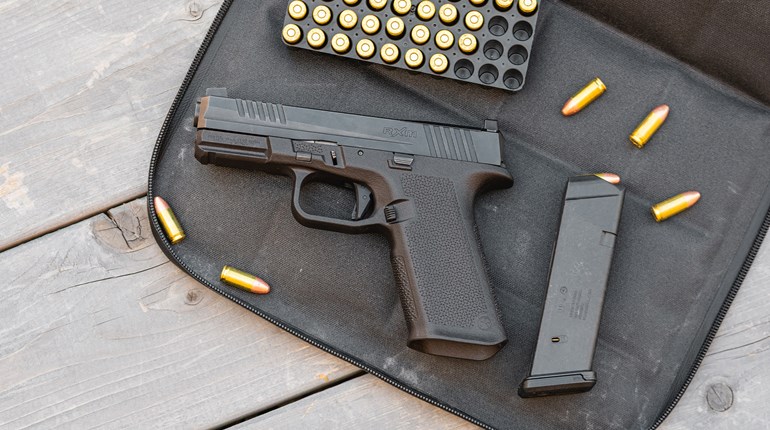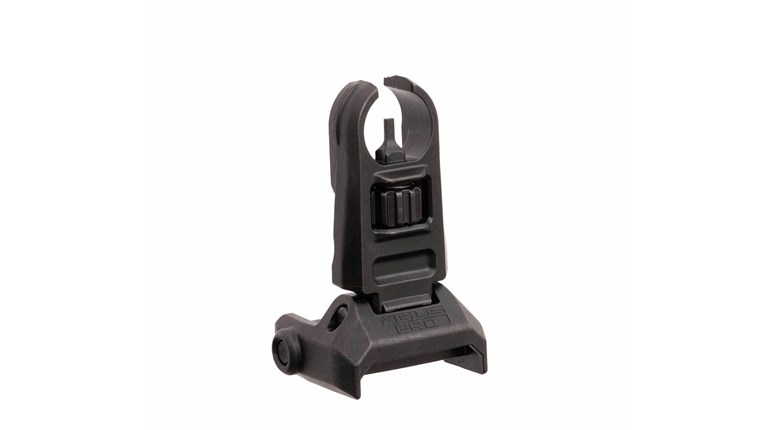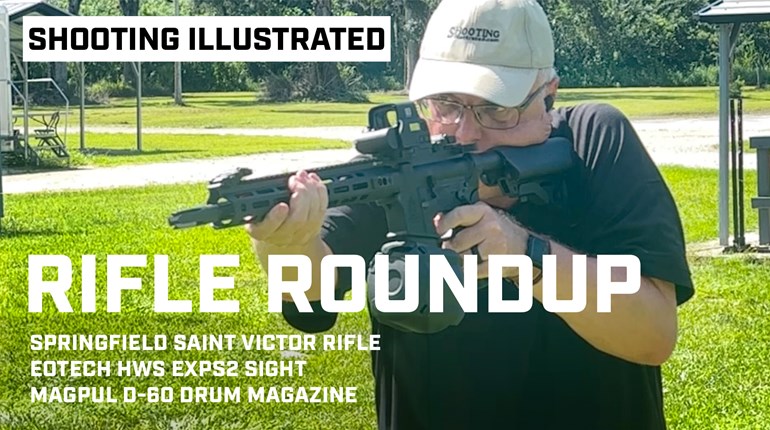
NRA American Warrior rounds out our series on the “Patrol Rifle” with John Farnam, founder and president of Defense Training International. In Parts 1 and 2, we reviewed a little of the history, rationale and tactical application of the M4 Patrol Rifle as a concept. For Part 3, we had a chance to shoot a specific example and talk about nuts and bolts: John’s own “Farnam Signature,” as it happens. Specified by John and jointly designed with Keith Everett of M4 Precision, suffice it to say, it’s quite a rifle. Here’s why.

NRA American Warrior: One thing we noticed right away was upper/lower fit. In this era of high precision, multiple axis CNC, we see some rifles that are tighter, even hard to get into. What thought process underpins those fit tolerances?
John S Farnam: There’s no question that Keith could build the rifles “tighter,” but before we ever put tool to metal we asked ourselves, “What is the rifle really for?” The answer was: “It’s a utility battle rifle, a fighting rifle.” If we were after a ½ MOA competition gun, we would have been willing to make tolerances in many parts of the rifle tighter, because in that venue, some failures to function are an acceptable tradeoff for the accuracy improvements they make possible. Not so for a rifle that has to go bang every time. Practical accuracy can still be excellent, while yielding a rifle that will run when seriously dirty and under-maintained. All the Signature rifles have met that standard pretty easily, and I shoot every one before we send it out. That way, we’re sure.
AW: So there is an accuracy standard?
JSF: It’s a 2 MOA rifle with a broad range of ammunition. However, that’s an overlooked factor right there: Depending on where and how a given lot of .223/5.56 is manufactured, you can introduce an additional 3 MOA of variation, batch-to-batch. The Signature will almost certainly keep running that ammo and produce acceptable hits, while many other rifles will become seriously temperamental. Keep in mind that an actual 2-in. gun in a military/LE auto-loader is relatively new and rare, and 2 “MOA of felon” (or bad guy) ought to be plenty. We had a student put this very well in a class a while back: His thick accent (we were out of the country) didn’t disguise an essential truth, “You Americans make things with tight tolerances because you can, not because it’s necessary.” It’s worth remembering! <<laughing>>
AW: Do you think twist rate is a big deal in the accuracy vs. reliability considerations?
JSF: Not in and of itself, though naturally a properly cut chamber and ramp are part of the barrel as an assembly, and Keith sees to it that this works with pretty much any 5.56 or .223. Where twist rate comes into play is three-fold. First, will it spin all the bullet weights you’re likely to encounter? The 1-in-8 rate of the Signature barrels handles heavier bullets very well (up to 77 grain at least), yet won’t spin 50s so fast that they literally come apart.
Faster twists can have other problems as well, at least potentially. Bullets that really need the 1-in-7 rate to stabilize generate substantially more friction in the bore: In the short term, it heats up more quickly, even to the point you can’t hold the rifle. In the medium-to-long term, this means they’ll get “shot out” more rapidly, too. The 1-in-8 strikes a good balance. We asked ourselves, ‘What is the rifle really for?’ The answer was: ‘It’s a utility battle rifle, a fighting rifle.’
AW: How does trigger weight fit in the equation? Obviously, there’s a point at which this has an effect on accuracy, both positive and negative.
JSF: The “stock” trigger is an ALG Defense at 5 to 6 pounds. It is essentially “military spec,” but with no creep or graininess. We’ll also use the Wilson if requested. But—for what are probably obvious reasons—a 2-pound trigger doesn’t belong in a fighting gun like ours. They tend not to be as durable for one thing, and for another you have essentially no tolerance for ADs and NDs—the stakes are always too high. The flip side is that any higher press weight doesn’t add safety, either. The inability to properly control a 5-lb. trigger is a training issue, not a mechanical one. More than anything, we think these triggers are top quality but also good values: If someone wants something else, all they have to do is specify it.
AW: In terms of handguard and barrel termination, it’s Troy Industries and the Smith Enterprises Vortex, correct?
JSF: Yes, Troy: Love the “squid” grip. The texture is just about perfect. It’s coarse at the macro-level, which means it shrugs off nearly any contaminant, yet won’t tear up fabric or skin. There’s a lot of interest in Keymod right now too, and it’s a good, versatile system. The thing I don’t care for quite as much is that it’s a thin piece of metal. Most seem plenty strong, but they heat up quickly—a problem (again) in a fighting rifle.
The Vortex flash-hider needs no explanation: In terms of minimizing flash signature from the shooter’s perspective, it’s tough to beat.
AW: A Farnam Signature package includes an Aimpoint PRO “Patrol” optic and Troy BUIS too, correct?
JSF: It does. These are mounted in co-witness alignment, so that if the primary goes down, shooting posture and rifle position remain the same. There’s no need to “roll” or otherwise reposition the rifle to stay engaged, except for what’s necessary to deploy the BUIS. We prefer the Troys here too as they’re extremely durable and accurate. In point of fact, this whole operation is unlikely: The Aimpoint PRO is tough even by military standards, and it’s a favorite because the cost/benefit is so good.
AW: And mount position for the optic?

JSF: It’s typical to attach the optic to the upper receiver rail, though we’ve had no problems moving them out to the handguard: The way Keith puts the Troy on, they don’t loosen up. Handguard mounting achieves the wide-open tactical perspective even better, though the slight inevitable flex that can occur does seem to have a very small, negative effect on accuracy. I recommend [mounting] as far out on the upper as the optic and rail slots will allow as a compromise. This position means you won’t have to get your face out of the sight to see what else is going on around you.
AW: In terms of the stock, is collapsible a “gotta have?”
JSF: That depends on how you look at it, but it’s crucial for a rifle like the Signature to “travel” well. When cased, a collapsible stock is more discreet by 3 1/2 inches—short enough not to attract unwanted attention or especially outright suspicion. When deployed, particularly in and out of vehicles and in tight indoor confines, it’s a clear benefit. And there are occasions when getting around other gear makes that variable length useful, too. We’ll certainly fit a fixed stock if somebody really believes the rigidity adds something, but nobody has asked for one yet. Manufacturer for these components is Magpul; no explanation of “why” needed there, either.
AW: We noticed while shooting the rifle that there aren’t any ambidextrous or oversized controls on the Signature, which leads us to suspect a theme. Are we right?
JSF: You are. <<Laughing>> The safety is arguably easiest to explain: It’s simply dangerous on the right side of the rifle. The motion to engage it is complicated, making an incomplete actuation more likely. Also, this puts it on the “outside” of a slung gun, making unintended disengagement by some external contact possible.
For the mag release, the correct method on mag changes makes it unnecessary: Think it through, and you realize it’s a big target already. In terms of the bolt release, I prefer to see people run the charging handle. It’s a lot more positive in terms of control, access and motion, and eliminates the need for auxiliary levers that add snag hazards or other issues in disproportion to any benefits (we chose the BCM, but you can specify another). This also makes something else a sure thing; nothing but the trigger and trigger finger inside the guard, and therefore no confusion about what’s supposed to happen there! <<Us, laughing>>
AW: We’re sure to have missed something, John. Anything else we ought to know?
JSF: Keith would probably want everybody to know a little about the metallurgy I expect, but otherwise, not much. The upper/lower pairs are forgings, of course, but available in two different versions. The original is all self-lubricating Robar NP3 inside, and Rogard outside. It makes for a nice looking rifle, but far more important, one with really proven durability. The alternative is based on a lube-free Anderson Manufacturing upper/lower, and uses their RF85 treatment: nothing to pick up crud, 85 percent less friction, and soap and water clean up.
Sometime in the last few years, I think the AR superseded the 1911 as the most screwed-with gun in history, and not always for the better. With the Farnam Signature, we were trying to put true advances together in one place. So far, so good.
AW: You’ll have a hard time getting any argument from us. Thanks as always, John.
JSF: Sure.


































